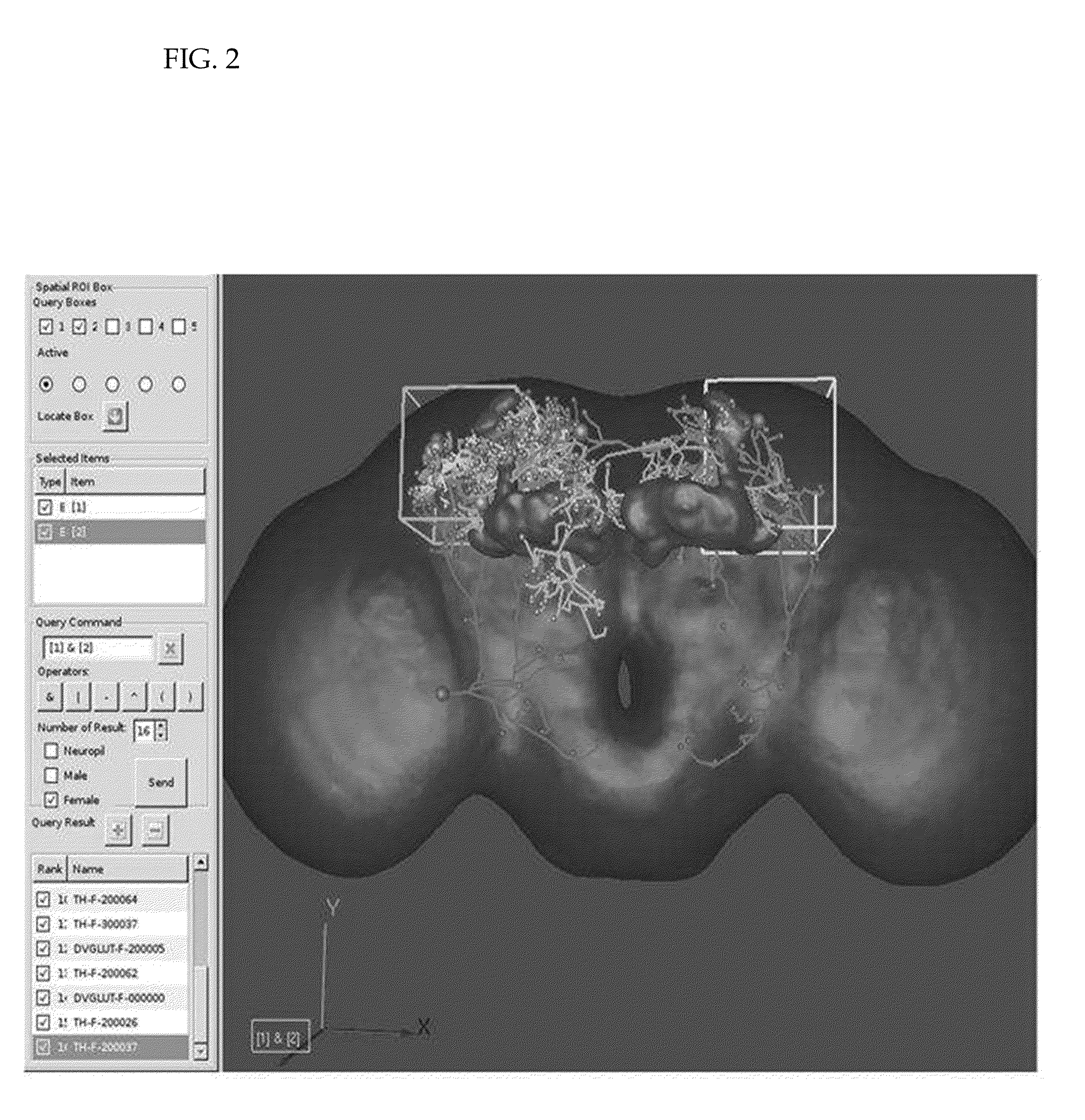Method for Searching and Constructing 3D Image Database
a three-dimensional image and database technology, applied in the field of three-dimensional (3d) image database, can solve the problems of micro-meso-scale biological research that remains understudied, biologists often cannot obtain images (information) of an organism's internal structure without damaging the organism itself, physical limitations of laboratory equipment, etc., to facilitate multi-angle observation
- Summary
- Abstract
- Description
- Claims
- Application Information
AI Technical Summary
Benefits of technology
Problems solved by technology
Method used
Image
Examples
example 1
Generating 3D Images
[0030]The 3D image was generated by inputting Drosophila neuronal image obtained from micro-imaging device. Said image was acquired from a fluorescent-labeled specimen scanned by a laser scanning microscope. During the scanning process, at least part of the sample was scanned by laser. The cross-section of different depths of the sample was scanned in accordance with a predetermined order; the resulting scanned images were numerous plane images at different depths. Images from different slices of the same stack were combined to form a complete image; and then the resulting 3D image consisting of different cross-sections was generated by computer software such as AVIZO (Visualizaiton Science Group, Merignac Cedex, France).
example 2
Constructing 3D Image Database
1. Aligning 3D Images to a Standard Coordinate
[0031]The 3D images generated from image processor programs, such as AVIZO, were aligned to a standard coordinate. The alignment correction on 3D images made different image sets to have common space coordinates.
[0032]In a preferred embodiment, the standardized coordinate was generated by demarcating a standard Drosophila brain space according to Cartesian axis x, y and z. (Wu, C. C. et al. 2008 Algorithm for the creation of the standard Drosophila brain model and its coordinate system. 5th International Conference on Visual Information Engineering VIE, Xi' an, China, pp. 478-483).
[0033]After aligning to the standardized coordinate, each raw 3D image was corrected to fit the standardized coordinate. As a result, each voxel of the 3D image would designate a point location (X,Y,Z). The spatial and intensity information of the voxel (with gray level intensity value above threshold) of 3D images was then stored ...
example 3
Searching 3D Image Database
[0045]The present invention provided a method for query of neuronal image database. A preferred embodiment was an interactive method for searching a 3D brain neuronal image database of Drosophila.
[0046]The database in the present invention stored the information of connectivity relationships between the brain neuronal networks of Drosophila. Users can query the database through a 3D interactive interface. In this database, users could query the neuronal transmission paths of neuronal signal stimulated by the binding of olfactory receptors with certain molecules. The results showed the information regarding neural transmission paths to olfactory glomeruli, and users could further query which site of mushroom body was the recipient of the stimulated signal.
[0047]FIG. 5 illustrated system architecture for interactive search of the 3D image database. The said interactive search device 10 was linked via the internet 60 for data transmission, and automatically s...
PUM
 Login to View More
Login to View More Abstract
Description
Claims
Application Information
 Login to View More
Login to View More - R&D
- Intellectual Property
- Life Sciences
- Materials
- Tech Scout
- Unparalleled Data Quality
- Higher Quality Content
- 60% Fewer Hallucinations
Browse by: Latest US Patents, China's latest patents, Technical Efficacy Thesaurus, Application Domain, Technology Topic, Popular Technical Reports.
© 2025 PatSnap. All rights reserved.Legal|Privacy policy|Modern Slavery Act Transparency Statement|Sitemap|About US| Contact US: help@patsnap.com



